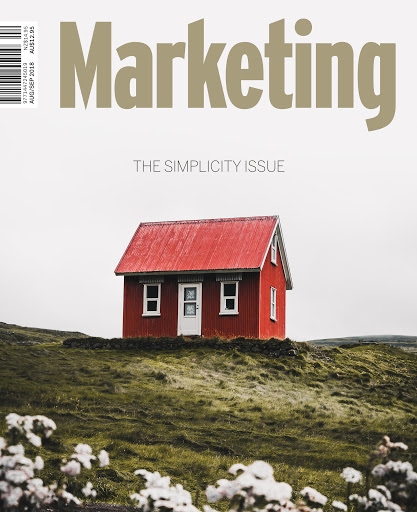The CX mullet – why brands should be taking their CX strategy to the barber
Share
Slick customer experiences in the front-end require plenty of action at the back. Rod Moynihan tells marketers to take a look at which haircut their brand is rocking and pull out the scissors on their CX strategies.
This article originally appeared in The Simplicity Issue, our August/September 2018 issue of Marketing magazine.
 The mullet has been a part of the Australian cultural zeitgeist for decades, running the gamut between light-hearted ’80s nostalgia and markers of identification within communities. Mere mention of the word prompts a smile.
The mullet has been a part of the Australian cultural zeitgeist for decades, running the gamut between light-hearted ’80s nostalgia and markers of identification within communities. Mere mention of the word prompts a smile.
One retail industry leader elevates its cachet even further, saying that the mullet is back in the workplace, too; not as a fashion choice, but as a metaphor for businesses that keep customer experience (CX) front and centre.
“The new brand-and-business mullet should be ‘simple in the front, sophisticated in the back,” explained James ‘JC’ Curleigh, president of the Levi’s brand at the 2018 National Retail Federation Big Show.
“Think of the best brands on Earth… they found a way to deliver simplicity on the front-side through a very sophisticated platform on the back side.”
 For Levi’s, that means a customer can easily find their favourite jeans on an ecommerce website; that the style marketed to the individual customer in an email is in stock as promised; that the email follow-ups take size, preferences, and previous purchase into account.
For Levi’s, that means a customer can easily find their favourite jeans on an ecommerce website; that the style marketed to the individual customer in an email is in stock as promised; that the email follow-ups take size, preferences, and previous purchase into account.
And the kicker: that it was never obvious that those experiences were supported with an intricate behind-the-scenes infrastructure. As Zendesk CEO Mikkel Svane puts it, in customer service, “complexity is not a strength”.
Buzz cuts and beards, please stand up
If the mullet is the goal, what kind of haircut is your business rocking right now? In other words, what is the current state of your CX in relation to the ideal state?
Consider an example of current state – the opposite example to the hypothetical jeans shopper with the seamless experience. Let’s say I bought a jacket that I need to return via mail, but I am not sure how, so I contact the support team.
Great, support is on it. But since the support team is not in communication with the marketing department, I continue to receive messages about the same item via email or social media channels.
This can be a frustrating experience; why don’t they know that I already bought and returned that particular jacket? As frustrating as the experience is, it is not the root of the problem. Rather, it is a symptom of a larger one: internal silos and complexities have become painfully obvious to the outside world, and scenarios like these are the result.
Direct-to-consumer: the opposite of information overload
The coat example paints a clear picture of how retail companies may be more complicated than they think. This leaves many on the business side of things wondering how to rectify the problem for customers. If simplicity – the front of the mullet – is the Holy Grail, there is a clear argument for retailers to do only a few things exceptionally well.
Direct-to-consumer brands such as Catch Group and Mon Purse stand in clear contrast to overwhelming, large shopping environments, and it is hard to argue against the benefits to the consumer.
The experience is often simple, clean and direct – qualities customers expect in greater numbers. It is easy to learn the philosophy behind the companies and their products. All the products fit on one page and they are a snap to order. I know how to contact support or self-serve on their help centre if something goes awry. And I know what to tag in my social media posts (less important, but nice to have).
Simplify at any size
For even the most complex organisations in the retail game, there are ways to simplify without reinventing the wheel.
- Truly be in a relationship with your customers: it is imperative to treat customers the way you want to be treated; for example, by asking first about their needs and wants, as opposed to jumping straight into sales mode.
- Pick the right tech partner: the best solutions will guide your fans and customers toward a simple solution. Help them help you.
- Use data to inform your decisions from the inside: customers do not need to know how much data analysis went into that perfect scarf arriving in their subscription box at just the right time of the season. They probably do not want to know, either.
Zendesk chief operating officer (COO) Tom Keiser explains, “Anonymity does not beget loyalty.” Data tells companies a lot about their customers’ needs and wants, and tapping into that data is a big step in identifying where their experiences could be improved.
CX is just like a mullet in one more way – you are likely to get little credit for it!
Everyone notices when he or she receives poor service, and the punishment of shame often outweighs the ‘crime’. Conversely, no one seems to notice when CX is done well. In the name of CX, dare to be the company that does it well. The biggest compliment could be that nobody notices – and they keep coming back for more.
Rod Moynihan is director at Zendesk ANZ
* * * * *
To purchase a copy of the latest issue, or a subscription to Marketing magazine, visit the online shop »
* * * * *
Image credit: Melanie Kanicky















